Students and staff shelter in their respective classrooms when there is a lockdown drill or other emergency requiring shelter in place. So, having the ability to secure a classroom is critical.
One of the most important features for securing a classroom is the door. A person seeking to harm others often enters the school and goes down the hall to target classrooms. In the case of an active shooter, if the shooter cannot breach the door, they cannot enter the classroom. If they cannot see into the classroom, they cannot target teachers and students.
The following tips for improving classroom door security are based on best practices observed during the many school safety and security assessments I have helped conduct.
Solid Wood Core Doors
A classroom door should be commercial grade with a solid wood core. A solid-core door is difficult to breach compared to a hollow or partially hollow core door. In addition, the solid-core door helps muffle sounds from the hallway into the classroom.
Classroom doors should be installed in a solid steel frame. A solid-core door in a steel frame cannot be breached with a kick or a shoulder.
While metal doors would be even more secure, they are often cost prohibitive considering the number of classroom doors in a school. Some schools have added a lightweight ballistic-resistant layer on the back of doors for added protection. However, this feature is also cost prohibitive for most schools.
A solid wood core door is not bulletproof or impenetrable, but it is very difficult to breach.
Door Locks
The lock on the classroom door should not be a standard lock that can easily be jimmied with a credit card. Classroom doors typically have a commercial lever-style handle with a solid latching mechanism that cannot be pried.
As a best practice, classroom doors should be able to be locked or unlocked from the outside with a key, but not in a way that prevents someone from leaving the classroom. In addition, classroom doors should be able to be locked with a key from the inside in a manner that does not require the door to be opened to lock. This is a critical element during a lockdown situation. There should also be an indicator on the inside of the door handle that indicates it is in lockdown.
Even though using a key during a crisis requires a teacher to be calm and have motor control, a keylock on the inside is preferred over a button or twist lock. Such locks can be engaged by students to lock out teachers and staff.
Many schools have encouraged teachers to keep the classroom door locked. The classroom door operates like a storeroom door – when the store is closed, the door is locked and needs to be opened from the outside with a key or electronic opening device (e.g., card reader, keypad).
Another type of door lock I have seen in some schools is the crash or panic bar. It also stays locked on the outside but can always be opened from the inside. The crash bar is easier to open when there is an emergency, like a fire. In times of emergencies, teachers and students can push the crash bar to open the door instead of having to locate and turn a handle when in a state of stress or panic.
Crash bars contain a more solid lock with a latch accompanied by a “dead latch” that prevents the lock from being pried. There is also typically a hex tool that can be used on the crash bar to fix the latch in the open position, call the “dog down” position. This allows the door to be freely opened from the outside. Crash bars are more expensive than standard handles but are considered a better option because they cannot be easily pried open, and are easier to open from the inside.
I have also seen schools use deadbolts, door jams and barricades, and various devices to lock the doors from the inside. While effective in preventing a door from being breached, it is important to check with local fire and police regulations so that public safety personnel are able to access classrooms in the event of an emergency.
Door View Panels
Another common feature of classroom doors is a glass view panel or window. Such a panel allows someone to see into a classroom or someone from the classroom to see out into the hall. I prefer a narrow vertical view panel instead of a fuller glass pane. The panel is easier to cover in an emergency and does not allow a full view into the classroom.
The glass in the panels should be tempered so that the glass does not break into jagged shards if shattered. A more expensive yet stronger option is to provide safety glass that is ballistic resistant.
It is also important that the view panel be located away from the handle of the door. If an intruder breaks the glass, they should not be able to reach a hand in to unlock the door.
All view panels should have the ability to be covered during a lockdown or other crisis. Safety shades are a best practice to serve this purpose. They are typically solid black and are slightly wider than the view panel to ensure that they completely block all sightlines into the room. When there is no emergency, the shades can be raised to allow views into and out of the classroom.
The methods teachers use to creatively cover classroom view panels and windows are endless. My preference is that all classrooms use the same safety shade. Artwork and other decorations can allow small gaps that enable views into the classroom or that permanently obscure any views. Blocking the view into the classroom is critical during a lockdown, but having the ability to see out of the classroom is critical for other emergencies, such as a fire.
Keeping Classrooms Safe
There are many other features, such as exterior windows and safe areas in the classroom, which are important in keeping classroom occupants safe. However, a secure door should not be overlooked.
Having said that. as a school security assessor, the number one security issue I see is the lack of a consistent policy in schools on locking doors and covering view panels.
Whether to leave classroom doors locked or unlocked is a controversial issue. Many schools elect to leave classroom doors locked during class. This is usually the safest option. However, leaving the door locked results in a disruption to the class every time a student seeks to enter a classroom while class is in session. For this reason, we have also seen many creative ways of blocking the latching mechanism so that rooms do not lock. See photo below.

Creative use of a face mask to keep a door unlatched
Always keeping the doors locked is also an issue if trouble starts in the classroom as staff may not be able to quickly enter the room to help, even if they have a master key on hand.
Covering the privacy panels is another controversial policy issue. Artwork is an attractive way of covering panels, but it often defeats the purpose. There are times when seeing through the window can be important. I have observed many ways view panels have been covered, and many of them are not secure.
Every school should have a consistent policy on whether classrooms should be locked and unlocked during the day, and what should be used to cover view panels. There are risks and vulnerabilities that must be weighed with each choice.
The number one priority of any school system is to maintain a safe learning environment for teachers and students. This can only happen when classroom security procedures are consistently implemented and followed. Some of these security features may seem excessive until they are needed – and then they are life savers.
______________________________________________________________________________________



.jpg)


-1.jpg)
.jpg)
.jpg)
.jpg)
-2.jpg)
.jpg)


.jpg)
.jpg)
.jpg)
.jpg)
.jpg)

